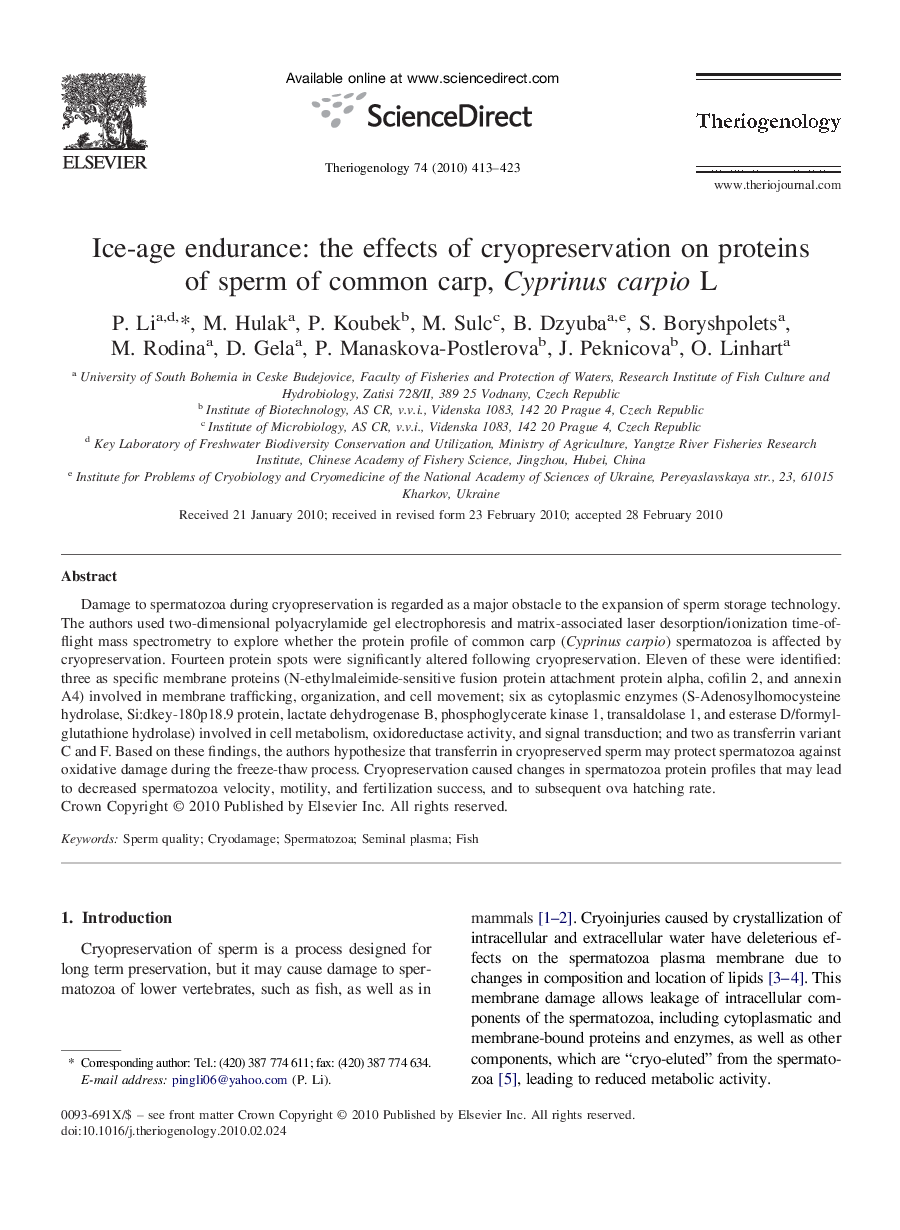| Article ID | Journal | Published Year | Pages | File Type |
|---|---|---|---|---|
| 2097873 | Theriogenology | 2010 | 11 Pages |
Damage to spermatozoa during cryopreservation is regarded as a major obstacle to the expansion of sperm storage technology. The authors used two-dimensional polyacrylamide gel electrophoresis and matrix-associated laser desorption/ionization time-of-flight mass spectrometry to explore whether the protein profile of common carp (Cyprinus carpio) spermatozoa is affected by cryopreservation. Fourteen protein spots were significantly altered following cryopreservation. Eleven of these were identified: three as specific membrane proteins (N-ethylmaleimide-sensitive fusion protein attachment protein alpha, cofilin 2, and annexin A4) involved in membrane trafficking, organization, and cell movement; six as cytoplasmic enzymes (S-Adenosylhomocysteine hydrolase, Si:dkey-180p18.9 protein, lactate dehydrogenase B, phosphoglycerate kinase 1, transaldolase 1, and esterase D/formylglutathione hydrolase) involved in cell metabolism, oxidoreductase activity, and signal transduction; and two as transferrin variant C and F. Based on these findings, the authors hypothesize that transferrin in cryopreserved sperm may protect spermatozoa against oxidative damage during the freeze-thaw process. Cryopreservation caused changes in spermatozoa protein profiles that may lead to decreased spermatozoa velocity, motility, and fertilization success, and to subsequent ova hatching rate.
